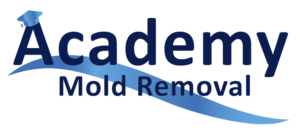Attic Mold Removal Step-by-Step: Tips to Prevent Roof Damage
September 21, 2024Common Attic Mold Removal Mistakes You Should Avoid
September 21, 2024Attics are prime areas for mold growth due to their exposure to moisture, poor ventilation, and insulation issues. Left untreated, attic mold can lead to serious health risks and damage your home’s structural integrity. Understanding the importance of attic mold removal is key to maintaining a clean and safe environment. In this article, we’ll explore the most effective solutions to eliminate mold and keep your attic free of mold infestations.
Why Mold Thrives in Attics
Attics often trap heat and moisture, creating the ideal environment for mold to grow. Roof leaks, improper insulation, and insufficient ventilation allow moisture to build up, providing a breeding ground for mold spores. If not properly addressed, attic mold can spread throughout your home, affecting indoor air quality and leading to respiratory problems. This makes attic mold removal a crucial task for any homeowner.
Effective Solutions for Attic Mold Removal
If you’ve identified mold in your attic, it’s important to take immediate action to prevent it from spreading. Below are some of the most effective solutions for attic mold removal:
- Identify and Repair Moisture Sources
Before beginning any cleaning, it’s essential to locate and repair the source of the moisture. Roof leaks are a common cause of attic mold, so check for any damaged or missing shingles and repair them promptly. Additionally, make sure your attic has proper ventilation to prevent condensation from forming. By controlling the moisture, you eliminate the conditions that allow mold to thrive.
- Clean Mold-Affected Surfaces
Once the moisture issue is resolved, it’s time to focus on cleaning the affected areas. Use a mold-killing solution such as bleach, vinegar, or commercial mold removers to scrub the contaminated surfaces. For smaller infestations, a mixture of water and detergent can also be effective for attic mold removal. Be sure to wear protective gear, including a mask and gloves, to minimize your exposure to harmful spores.
- Remove and Replace Contaminated Materials
In severe cases, you may need to remove and replace materials that have been heavily infested with mold. This could include insulation, wood, or drywall. Mold can cause these materials to deteriorate over time, leading to structural damage in your attic. Replacing them ensures that the mold is completely eradicated and prevents further spread.
- Use a Dehumidifier
A dehumidifier can help keep moisture levels in check after attic mold removal. By reducing humidity, you prevent the conditions that lead to mold growth in the first place. Placing a dehumidifier in your attic is especially important if you live in a region with high humidity or if your attic has poor ventilation.
- Install Proper Ventilation Systems
Proper attic ventilation is key to preventing mold from recurring. Ensure that your attic is well-ventilated by installing roof vents or attic fans. This will allow air to circulate and help regulate temperature and humidity levels. Maintaining good airflow will not only prevent mold but also protect your roof from moisture-related damage.
How to Maintain a Mold-Free Attic
Preventing mold growth after attic mold removal is just as important as eliminating it. To maintain a clean and safe attic, follow these preventative steps:
- Regular Inspections: Conduct routine inspections of your attic, especially after heavy rain or snow, to catch potential mold problems early.
- Fix Leaks Immediately: If you notice any signs of roof leaks, address them as soon as possible to prevent moisture from accumulating in the attic.
- Keep Humidity Low: Use dehumidifiers or install moisture barriers to keep the humidity levels in your attic below 60%, as higher levels can encourage mold growth.
- Check Insulation: Ensure that your attic is properly insulated to prevent heat from escaping and causing condensation.
Conclusion
Attic mold poses significant risks to both your health and the structure of your home, making attic mold removal an essential task. By identifying moisture sources, cleaning contaminated areas, and implementing proper ventilation, you can effectively eliminate mold and prevent its return. With these solutions in place, your attic will remain clean, safe, and mold-free for years to come.
